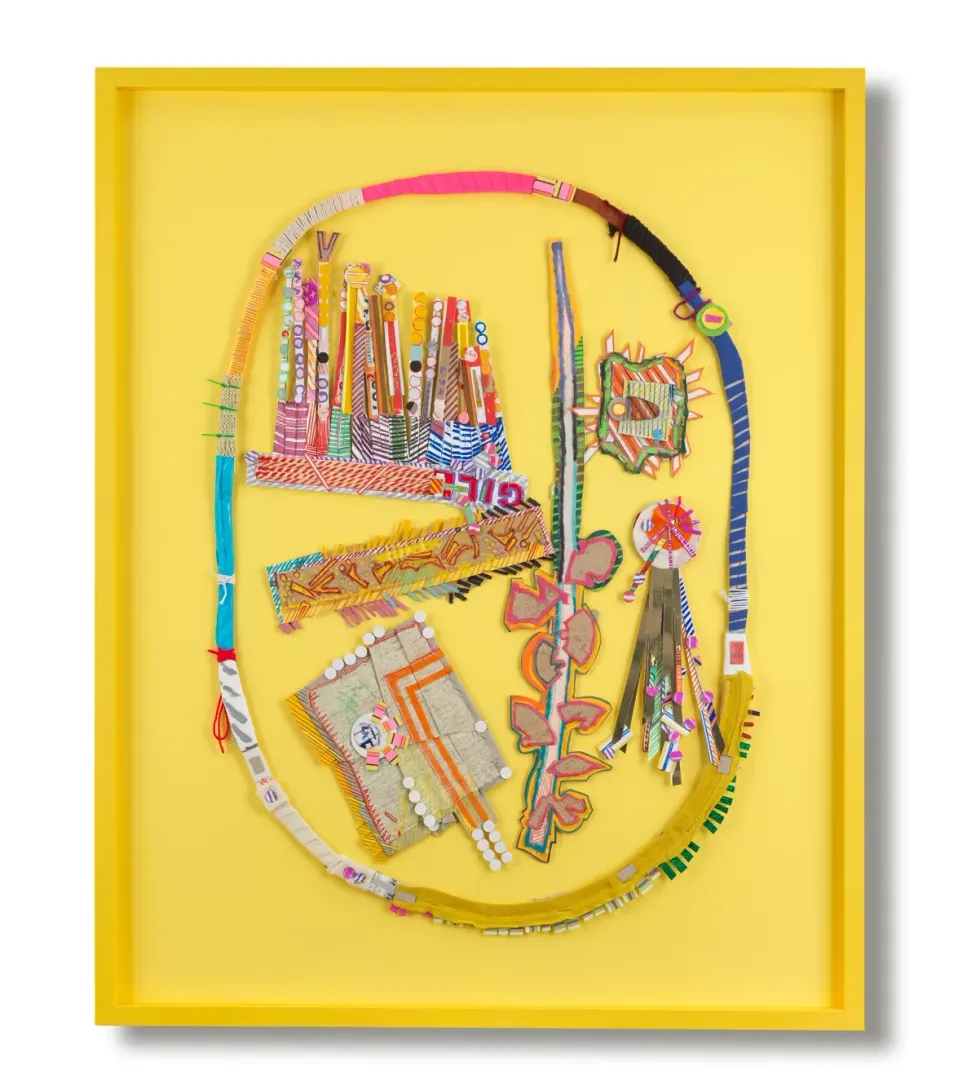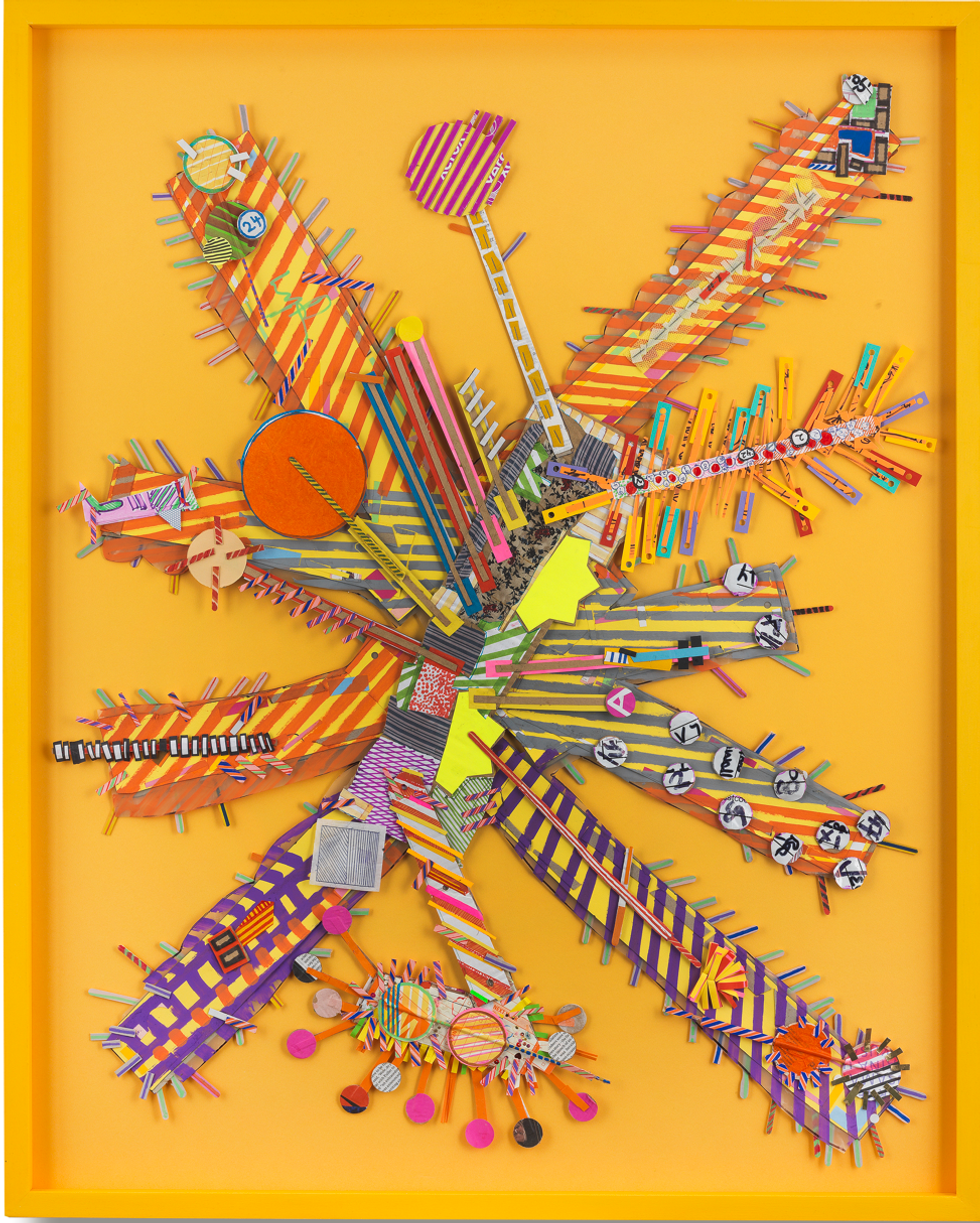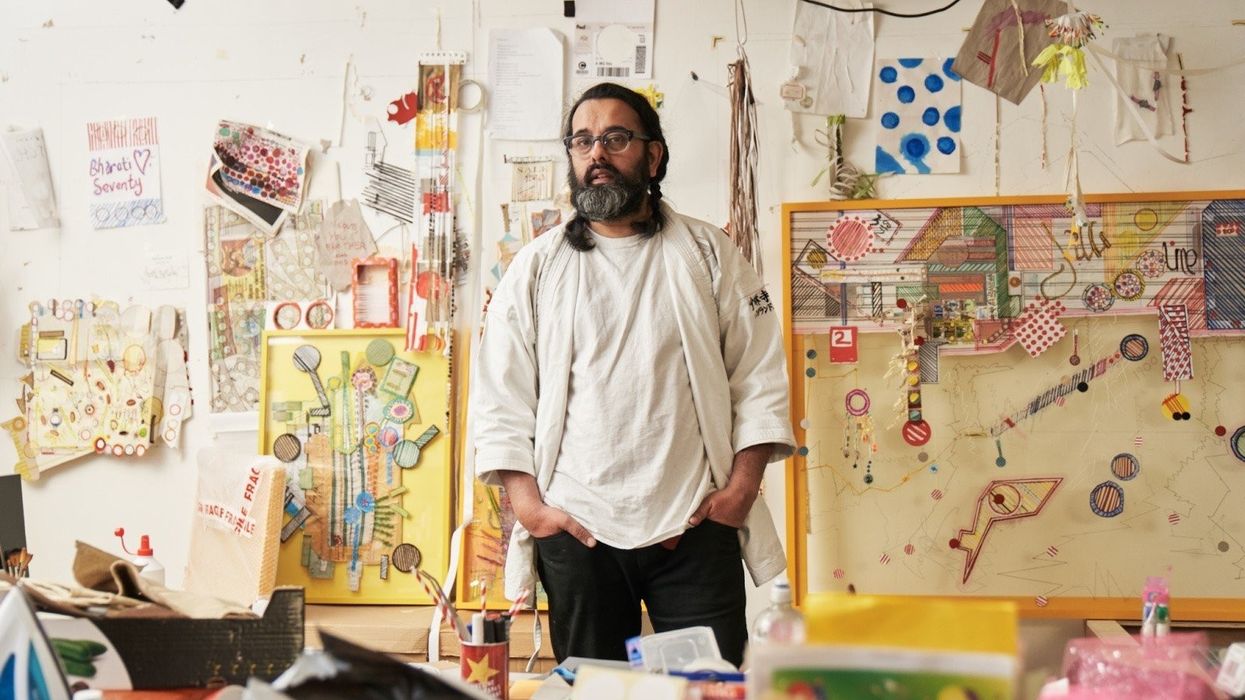LONDON-BASED multidisciplinary artist Liaqat Rasul has returned to Wrexham for homecoming exhibition NAU, NAU, DOH, CHAAR, at the celebrated Tŷ Pawb gallery.
Curated by Lewis Dalton Gilbert, the retrospective takes visitors through a cultural exploration using layered pieces in textile, paper and cloth, on a collection of works.
The candid reflection of life is a self-portrait for a creative talent, who went from being a young window dresser to becoming an acclaimed artist.
The works show how his identity as a Pakistani, Muslim, Indian, Welsh, and now an east London-based artist have been shaped.
Eastern Eye caught up with Rasul to discuss his journey, exhibition and future plans.
What first connected you to creativity?
In my early childhood, being both Welsh and Pakistani, taking trips to the village in Punjab, and window dressing in my parents’ shop aged 12 in Wrexham.
What drew you towards art, in particular?
I liquidated my fashion business in 2009, followed by several years working at a pub. It was during this period that I started creating collages. My first work, Memory, took two years to create.

Tell us about your new exhibition.
NAU, NAU, DOH, CHAAR is about mental health stories, struggling with life at times, geopolitics, the positive impact of immigration and being creative in two different disciplines - fashion and art.
How did you select the work for this exhibition?
I shipped the archive from my fashion brand, Ghulam Sakina, over from Delhi, as part of the process. The final selection came together through lots of meetings with Tŷ Pawb and the curator, Lewis Dalton Gilbert. Together, we had a clear focus and chose the works for this project that represented my 25 year career arc.
What inspired the unique title?
NAU, NAU, DOH, CHAAR is Urdu for 9924. This alludes to the years 1999 to 2024, a 25-year retrospective of my fashion brand, Ghulam Sakina, and my artistic practice. Lewis Dalton Gilbert helped shape the concept for my first ever solo show.
What is the key message you want to convey with the work in this exhibition?
In a time and a world where we find ourselves questioning the politics and systems at play, art offers something to believe in, and increasingly becomes a place for the whole family - a place to meet, for discussion, a space to unpack tough topics and experiences. I would like to think you can pick and mix what you want from this show. I want everyone to feel welcome and welcomed within it.

What does it mean to have this exhibition in your hometown of Wrexham?
It's a privilege to have been asked by Jo Marsh, the creative director of Tŷ Pawb, to exhibit my first solo exhibition in Wrexham. It feels magical to have her and the whole gallery team believe in me and my work. I feel very fortunate to have this opportunity.
What can we expect next from you?
A new exhibition in Margate at the Kavel Rafferty Gallery, commissioned by Margate Pride. This project reflects on the fashion industry’s effect on the global south and labour inequalities, exemplified by the 2013 Rana Plaza collapse in Dhaka, Bangladesh, which killed 1,134 people and injured approximately 2,500. This tragic event, linked to some UK high street brands, underscores the urgent need for ethical reforms.
What inspires you?
My parents, friendships, people watching, Kylie Minogue, wonderful teachers and mentors who took the time to educate me on trying new directions. Everyone has the right to express themselves, no matter their sexuality, race, gender or ability. Patience and kindness.
NAU, NAU, DOH, CHAAR at Tŷ Pawb gallery in Wrexham until November 2, 2024.
www.typawb.wales and Instagram: @liaqatrasulart











